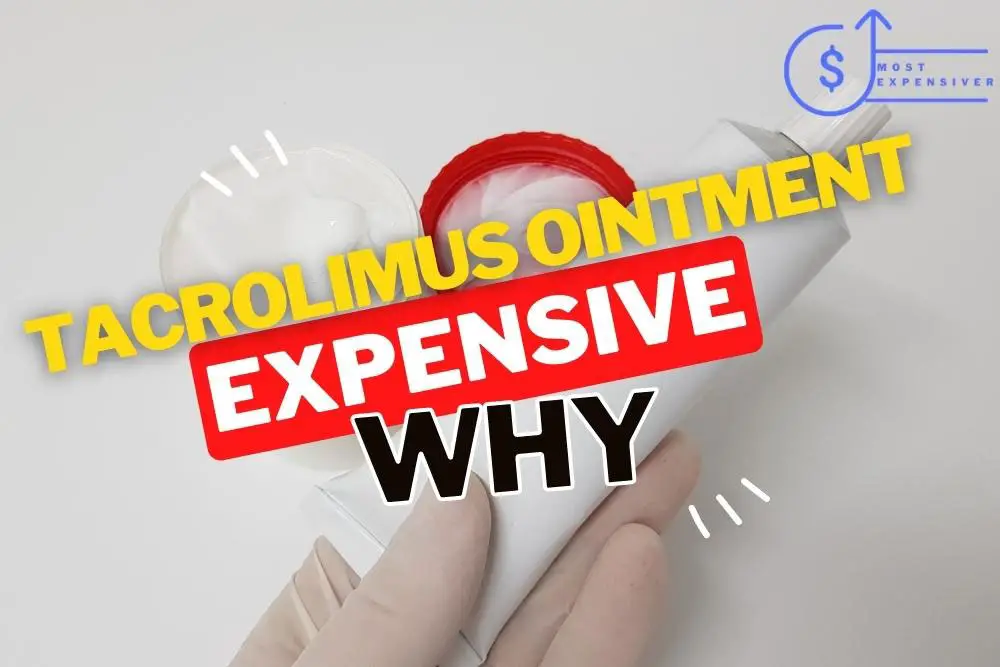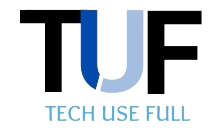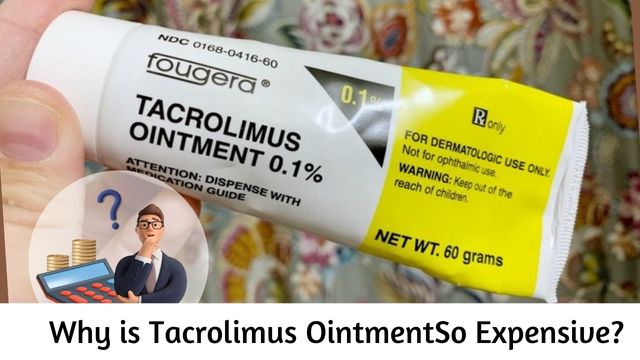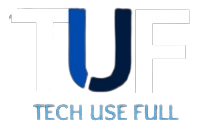Tacrolimus ointment is a powerful skin treatment for conditions like eczema and psoriasis, but its soaring cost has become a major concern.
This article aims to uncover why this medicine is so expensive and why it matters. Tacrolimus ointment is crucial for people with skin issues that can be uncomfortable and affect their lives. However, the high price makes it difficult for many to access.
Related Article: Skin Sensitive Makeup
In fact, its cost has been rising significantly, prompting worry among healthcare professionals, policymakers, and patient advocates.
By delving into the factors behind this high cost, including development expenses, regulations, manufacturing, marketing, insurance coverage, generics, and patient assistance programs, this article seeks to shed light on the challenges faced by patients and healthcare systems.
Ultimately, we hope to generate discussions on how to make this essential medicine more affordable and accessible for those in need.
Reasons Why Tacrolimus Ointment Is So Expensive
There are a few reasons why tacrolimus ointment is so expensive.
It is a relatively new drug: Tacrolimus was first approved by the FDA in 1999, so it is still under patent protection. This means that the only company that can legally manufacture and sell tacrolimus ointment is the company that owns the patent. This company can set the price of the drug however they want, and they have a financial incentive to keep the price high.
It is a specialty drug: Tacrolimus ointment is not a generic drug. A generic drug is a copy of a brand-name drug that has expired its patent. Generic drugs are typically much cheaper than brand-name drugs because there is more competition in the market. Tacrolimus ointment is a specialty drug, which means that it is used to treat a small number of patients with specific conditions. There is not as much competition for specialty drugs, so they tend to be more expensive.
It is a very effective drug: Tacrolimus ointment is very effective at treating atopic dermatitis, psoriasis, and other skin conditions. This means that there is a high demand for the drug, which also drives up the price.
| Strength | Size | Price (with GoodRx coupon) |
| 0.03% | 30 grams | $36.00 |
| 0.03% | 60 grams | $63.00 |
| 0.1% | 30 grams | $46.00 |
| 0.1% | 60 grams | $73.00 |
Manufacturing Factors Contributing to High Cost
Here are some factors causing the high prices of Tacrolimus.
Research and Development Costs
When we talk about why Tacrolimus ointment costs a lot, one big reason is the money spent on developing it. Here’s how it works:
Investment in Drug Development and Clinical Trials: Before a medicine like Tacrolimus ointment can be used by people, it goes through a long process of testing to make sure it’s safe and works well.
That takes a lot of money. Drug companies have to pay for the research, the tests, and all the scientists and experts involved. All these costs add up and can make the medicine more expensive.
Patent Protection and Exclusivity: Once a company develops a medicine like Tacrolimus ointment, they want to make sure they can sell it without others copying it right away.
So, they get something called a patent, which gives them exclusive rights to sell the medicine for a certain number of years. During this time, no one else can make a generic version of the medicine.
But having this exclusive right also means the company can set a higher price because there’s no competition. This can also contribute to the high cost of the medicine.
Regulatory Requirements
Approval Process and Regulatory Compliance: Before medicines like Tacrolimus ointment can be used, they need to go through a strict approval process set by the government.
This process ensures that the medicine is safe and effective for people to use. It involves a lot of paperwork, tests, and studies, which can take a long time and cost a lot of money.
Companies must follow all the rules and provide proof that their medicine works and is safe for patients. All these steps make the approval process lengthy and expensive.
Safety and Efficacy Testing: To make sure that Tacrolimus ointment is safe and does what it’s supposed to do, it has to undergo a series of tests. These tests check if the medicine works well and if there are any side effects.
Running these tests on thousands of people, collecting data, and analyzing results is a crucial part of ensuring that the medicine is safe for everyone.
However, conducting these tests also adds to the overall cost of developing and bringing the medicine to the market. It’s a necessary step to guarantee that people can trust and rely on the medicine for their skin conditions.
Manufacturing Expenses
Manufacturing expenses, which are the costs related to making Tacrolimus ointment, play a big role in why it’s expensive.
Complex Production Processes: Making Tacrolimus ointment isn’t simple. It involves complicated steps and precision. Special equipment and skilled workers are needed to create it. All these complexities in the production process add to the overall cost of the medicine.
Quality Control and Assurance: Ensuring that every batch of Tacrolimus ointment is safe and effective requires a lot of quality control and assurance.
This means rigorous testing and checks during the manufacturing process. These measures are essential to make sure the medicine works correctly and is safe to use. However, they also add to the expenses of making Tacrolimus ointment, contributing to its high cost on the market.
Marketing and Distribution
Promotion and Distribution Costs: When it comes to selling medicines like Tacrolimus ointment, there are expenses for advertising and making sure the medicine gets to where it’s needed.
Think of all the ads you see on TV or in magazines for different drugs – those cost a lot of money. Also, getting the medicine to pharmacies and hospitals takes effort and money, like shipping and storage costs.
Marketing Strategies in the Pharmaceutical Industry: Pharmaceutical companies have ways to make their medicines stand out and get noticed. They spend a lot on marketing strategies, like creating brand names, doing research to prove their medicine works, and even giving samples to doctors.
These strategies can be effective, but they can also add to the overall cost of the medicine, which can make it more expensive for patients.
General Understanding Of How These Factors Contribute To High Costs

Please note that these figures are rough estimates and can vary significantly based on the specific circumstances, companies involved, and the region in which the drug is developed and distributed. Pharmaceutical costs can be influenced by a wide range of factors and can change over time due to market dynamics and regulatory changes.
| Factors Contributing to High Cost of Tacrolimus Ointment | Expected Spending (in millions) |
| A. Research and Development Costs | |
| 1. Investment in drug development and clinical trials | $100 – $500 |
| 2. Patent protection and exclusivity | $10 – $50 |
| B. Regulatory Requirements | |
| 1. Approval process and regulatory compliance | $50 – $100 |
| 2. Safety and efficacy testing | $30 – $80 |
| C. Manufacturing Expenses | |
| 1. Complex production processes | $20 – $50 |
| 2. Quality control and assurance | $10 – $30 |
| D. Marketing and Distribution | |
| 1. Promotion and distribution costs | $60 – $150 |
| 2. Marketing strategies in the pharmaceutical industry | $40 – $100 |
Final Verdict
The cost of Tacrolimus ointment is influenced by research and development expenses, regulatory requirements, manufacturing intricacies, and substantial marketing and distribution costs. The impact of these factors is acutely felt by patients and healthcare systems, posing a considerable challenge.
However, through informed decision-making, advocacy for affordable alternatives, and potential reforms in pharmaceutical pricing and accessibility, we can strive to make essential treatments like Tacrolimus ointment more affordable and within reach for those who depend on them.
In this endeavor, the importance of collaborative efforts between patients, healthcare providers, policymakers, and the pharmaceutical industry cannot be overstated.



